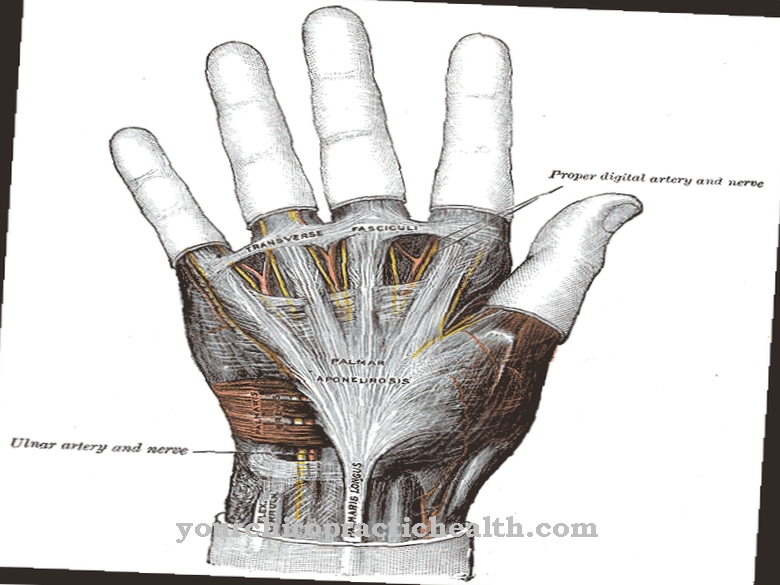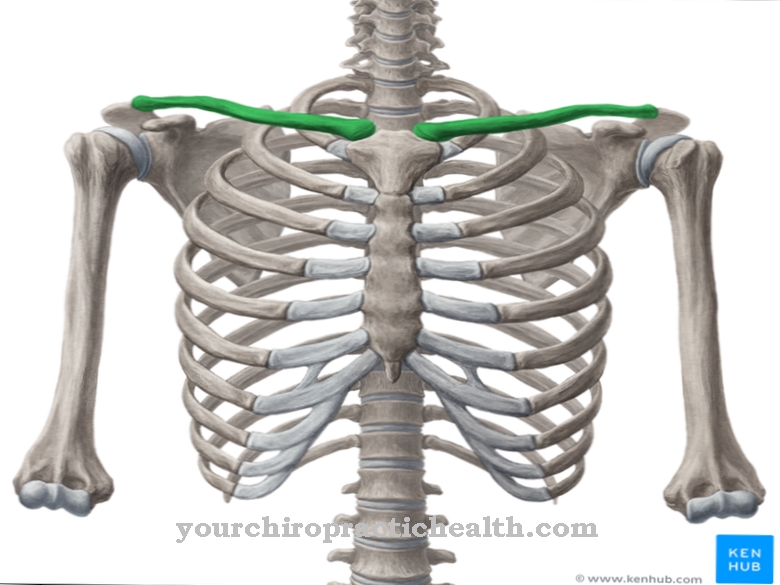Of the Stylopharyngeus muscle is a muscle located in the area of the human throat. It's long and narrow. Its job is to support the swallowing process.
What is the stylopharyngeal muscle?
The stylopharyngeus muscle is called the Style pharynx muscle translated. This is due to its shape and its position in the human organism. The stylopharyngeus muscle is a long and narrow muscle that belongs to the human throat muscles.
Muscles of the throat muscles are part of the skeletal muscles. They are located between the oral cavity and the throat. The throat is called the pharynx. It is a 12-15 cm long path that extends from the base of the skull to the trachea. This is the respiratory and food path between the oral cavity and the larynx. The trachea is shaped like a tube. It connects the larynx, called the larynx, to the bronchi. The trachea is part of the human airways.
The course of the stylopharyngeus muscle can be described as vertical or caudal. Its job is to support the act of swallowing. In addition, it expands the pharynx. The stylopharyngeus muscle is supplied by the IX. Cranial nerve. This is the glossopharyngeal nerve. Its name is translated as tongue and throat nerve.
Anatomy & structure
The stylopharyngeus muscle is a long, narrow, and round muscle. Its course is almost vertical in the throat. In a cross-section, its path can be seen very well. It begins on the temporal bone. This is called the temporal bone.
On the temporal bone there is the styloid process. This is a bony process. Its shape is elongated and stylized. The stylopharyngeus muscle begins on its medial side. Its path runs between the musculus constrictor pharyngis superior and the musculus constrictor pharyngis medius. Both are also muscles of the throat muscles. The stylopharyngeus muscle runs vertically along the pharynx.
Most of the muscle fibers of the stylopharyngeus muscle pass into other muscles below the lining of the throat. They include the palatopharyngeal muscle, for example. Some of the remaining fibers of the stylopharyngeus muscle terminate at the larynx. There are different cartilages in four layers. The thyroid cartilage, the cartildo thyroidea, forms the second level and the end of the stylopharyngeus muscle. The stylopharyngeus muscle is supplied by the IX. Cranial nerve, the glossopharyngeal nerve.
Function & tasks
The stylopharyngeus muscle, in conjunction with other muscles, is responsible for the functioning of the throat. During the act of swallowing, it works together with the musculus salpingopharyngeus and musculus palatopharyngeus. They all together raise the throat. The salpingopharyngeal muscle is known as the tubal and pharynx muscle. It lifts the throat and the larynx. It also has an important role in occluding the windpipe during swallowing.
It tightens the salpingopharyngeal plica. This is a bulge of the mucous membrane on the wall of the throat. Through this process, the epiglottis closes the windpipe and prevents liquids or food from entering the windpipe. The palatopharyngeal muscle is known as the palate and throat muscle. It lifts the base of the tongue. In addition, he is responsible for closing the mouth and lowering the palate during the act of swallowing. The muzzle is called the isthmus faucium. All three muscles have different tasks during the act of swallowing and still work together. This gives a little insight into the complexity of the swallowing process in humans.
This is used to transport food, liquids and the saliva produced from the oral cavity into the esophagus and from there to the stomach. It is important that none of the absorbed substances get into the airways during the entire process. The act of swallowing is the preparation of a voluntarily controlled process. This means that the stylopharyngeus muscle is subject to voluntary control. This applies until the swallowing reflex starts. This happens through irritation at the base of the tongue. The swallowing reflex is involuntary, but it is brought about by voluntary preparation.
You can find your medication here
➔ Medicines for sore throats and difficulty swallowingDiseases
Diseases that affect the area of the throat can affect the functioning of the stylopharyngeus muscle. Diseases of the throat include inflammation of the throat, the formation of carcinomas in the mouth and throat, fever, paralysis of swallowing or a cramp.
The formation of a spasm in the throat is called pharyngism. The swallowing paralysis occurs as soon as the IX. Cranial nerve, the glossopharyngeal nerve has a symptom of paralysis. An inflammation of the throat can cause simple discomfort when swallowing. In severe cases, a purulent inflammation of infection occurs, which greatly impairs the swallowing process.
One of the side effects of sleep apnea is the spontaneous relaxation of the entire musculature of the throat. With sleep apnea, breathing disorders occur during sleep. The patient stops breathing for a few or several seconds. As soon as there is inflammation of the IX. Cranial nerve comes, problems in supplying the stylopharyngeus muscle follow. Inflammation of the nerves can have a variety of causes and is known as neuralgia. If the muscle is not adequately innervated by the nerve, it will lose some or all of its functionality.
One disease that occurs in childhood is reportable diphtheria. This is a contagious and at the same time acute infectious disease. The infected areas include the upper respiratory tract. The disease has an influence on the act of swallowing. In addition, the pathogens of the disease release a toxin that can lead to life-threatening consequences.













.jpg)

.jpg)
.jpg)











.jpg)